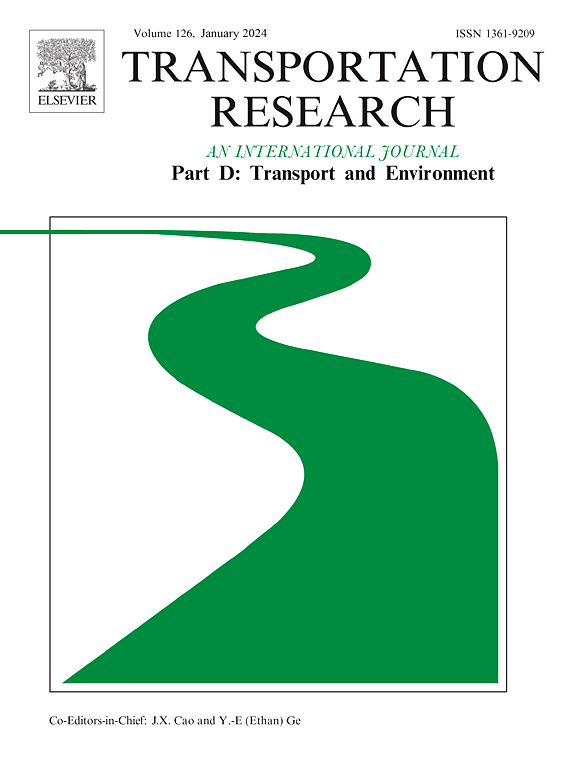迈向计算和感知的交通公平:可达性的公平评估框架
IF 7.7
1区 工程技术
Q1 ENVIRONMENTAL STUDIES
Transportation Research Part D-transport and Environment
Pub Date : 2025-07-12
DOI:10.1016/j.trd.2025.104908
引用次数: 0
摘要
大量的研究使用计算的运输公平,而很少有研究关注感知运输公平,更少的研究比较计算和感知运输公平的结果。本研究旨在构建感知可达性的公平性评估框架:使用基尼指数和比较指数来衡量计算的交通公平性;基于人们对公共交通服务、可负担性和可达性分布的感知来衡量感知的交通公平。通过对南京市保障性住房和商品房居民的实证研究,发现两类居民的基尼系数没有显著差异。然而,比较指数结果显示,中心城区两类居民的可达性不平等更为显著。此外,计算结果与感知结果之间存在一定的相关性。因此,本研究认为,在现有框架中加入感知交通公平是很重要的,因为它可以更全面地考虑个人生活经历。本文章由计算机程序翻译,如有差异,请以英文原文为准。
Towards calculated and perceived transport equity: An equity evaluation framework for accessibility
A large number of studies use calculated transport equity, while few studies focus on perceived transport equity, and even fewer studies compare the results of calculated and perceived transport equity. This research aims to construct an equity assessment framework for perceived accessibility: using the Gini index and Comparison index to measure calculated transport equity; measuring perceived transport equity based on people’s perception of public transportation services, affordability, and accessibility distribution. Through an empirical study of affordable housing and commercial housing residents in Nanjing, it is found that there is no significant difference in the Gini index between the two types of residents. However, the Comparison index results show that the accessibility inequality between the two types of residents in the central urban area is more significant. Moreover, there is a certain correlation between the calculated and the perceived transport equity measurement results. Therefore, this study believes that adding perceived transport equity to existing frameworks is important because it can more comprehensively consider personal life experiences.
求助全文
通过发布文献求助,成功后即可免费获取论文全文。
去求助
来源期刊
CiteScore
14.40
自引率
9.20%
发文量
314
审稿时长
39 days
期刊介绍:
Transportation Research Part D: Transport and Environment focuses on original research exploring the environmental impacts of transportation, policy responses to these impacts, and their implications for transportation system design, planning, and management. The journal comprehensively covers the interaction between transportation and the environment, ranging from local effects on specific geographical areas to global implications such as natural resource depletion and atmospheric pollution.
We welcome research papers across all transportation modes, including maritime, air, and land transportation, assessing their environmental impacts broadly. Papers addressing both mobile aspects and transportation infrastructure are considered. The journal prioritizes empirical findings and policy responses of regulatory, planning, technical, or fiscal nature. Articles are policy-driven, accessible, and applicable to readers from diverse disciplines, emphasizing relevance and practicality. We encourage interdisciplinary submissions and welcome contributions from economically developing and advanced countries alike, reflecting our international orientation.

 求助内容:
求助内容: 应助结果提醒方式:
应助结果提醒方式:


